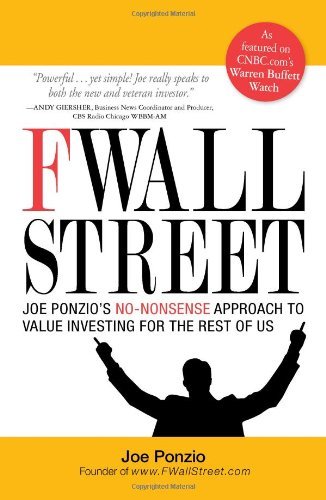
The Little Book That Builds Wealth: The Knockout Formula for Finding Great Investments
Book Description
Unlock the secrets of wealth-building with Pat Dorsey's compelling playbook, where financial strategy meets actionable insights. This riveting guide reveals the knockout formula for identifying powerful investments that can transform financial futures. With crystal-clear explanations, Dorsey demystifies the market’s complexities, driving home the importance of understanding competitive advantages. Each page is charged with electrifying techniques that empower anyone to navigate the investment landscape with confidence and purpose. Will you seize the opportunity to reshape your financial destiny, or let uncertainty hold you back? Your journey to financial mastery starts now!
Quick Book Summary
"The Little Book That Builds Wealth" by Pat Dorsey is a concise and engaging guide for investors seeking to identify and understand companies with enduring competitive advantages—what Dorsey calls economic moats. The book demystifies the characteristics that allow certain businesses to outperform their peers and explains why investing in companies with strong moats leads to superior long-term returns. Dorsey provides real-world examples and practical frameworks, illustrating how to distinguish robust businesses from those at risk. He describes various types of economic moats, such as cost advantages, network effects, and intangible assets, giving readers actionable tools to assess potential investments. This book is essential reading for anyone aspiring to build lasting wealth through smart, disciplined investment choices.
Summary of Key Ideas
Table of Contents
Understanding Economic Moats
Pat Dorsey introduces the concept of an "economic moat" as the central pillar of successful investing. An economic moat refers to a company's ability to maintain competitive advantages over its rivals in order to protect its long-term profits and market share. Dorsey emphasizes that identifying companies with strong moats is the key to discovering investments that will perform well over the long run. He illustrates how sustainable advantages—rather than fleeting trends or buzz—are what truly drive lasting value creation for investors.
Types of Durable Competitive Advantages
The book systematically breaks down the different types of economic moats. Dorsey identifies four primary kinds: intangible assets (such as patents, brands, and regulatory licenses), cost advantages, switching costs that make it hard for customers to change suppliers, and network effects, where value increases as more people use a product or service. By explaining each type in depth and providing real company examples, Dorsey equips readers with the knowledge to spot these advantages during their investment research.
Evaluating Moats in Practice
In practice, Dorsey guides readers through the analytical process of evaluating a company’s moat. He explains how to scrutinize financial statements for consistent profitability signals, assess the persistence of high returns on invested capital, and distinguish temporary performance from genuine competitive strength. Dorsey also warns of red flags, such as companies in commoditized industries, and urges investors to differentiate between businesses with durable moats and those benefiting from short-term luck or market optimism.
Avoiding Common Investment Pitfalls
A key part of the book is helping readers avoid common investment pitfalls. Dorsey highlights mistakes such as chasing hot stocks, mistaking growth for durability, or ignoring the importance of management quality and capital allocation. Through cautionary tales and analytical checklists, he teaches investors to remain disciplined and focused on substance rather than hype, guarding against overpaying for companies whose competitive advantages are weak or eroding.
Long-term Wealth Building Strategies
Finally, Dorsey ties these lessons together by outlining a long-term investment strategy. He recommends building a portfolio centered on companies with robust moats, bought at reasonable valuations. He advises patience and consistency, stressing that wealth compounds for investors who allow time and fundamentals to work in their favor. The book concludes by empowering readers to confidently navigate the investment landscape, armed with a clear framework for identifying what truly makes an investment great.
Download This Summary
Get a free PDF of this summary instantly — no email required.





